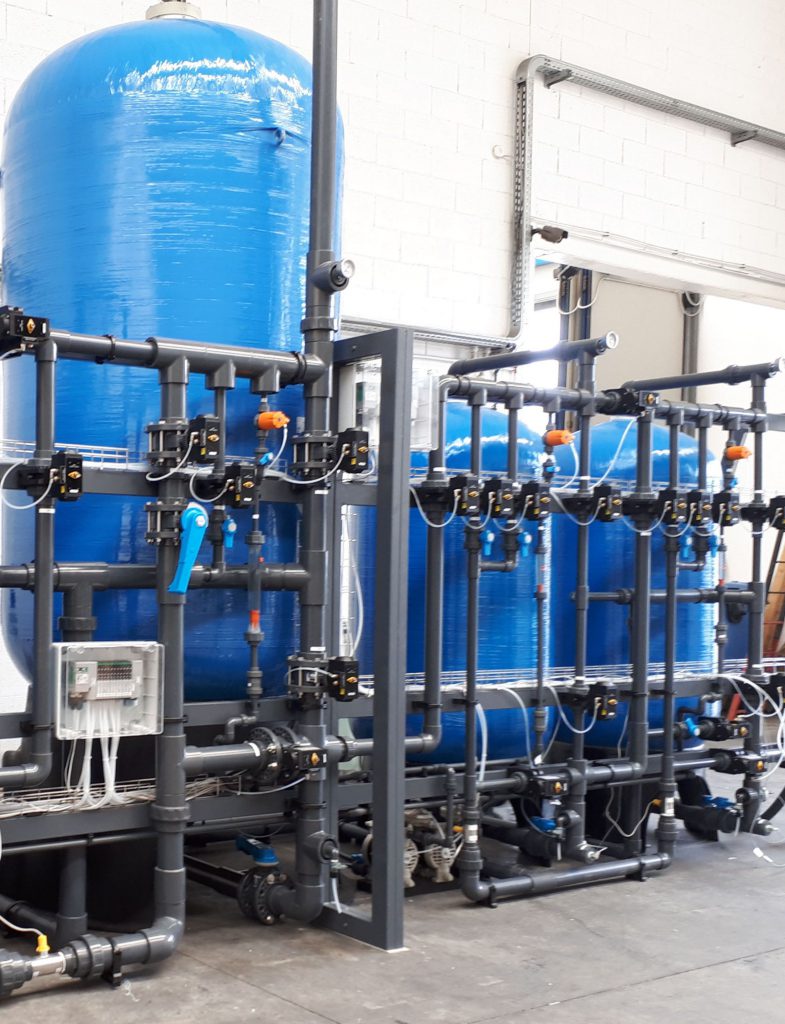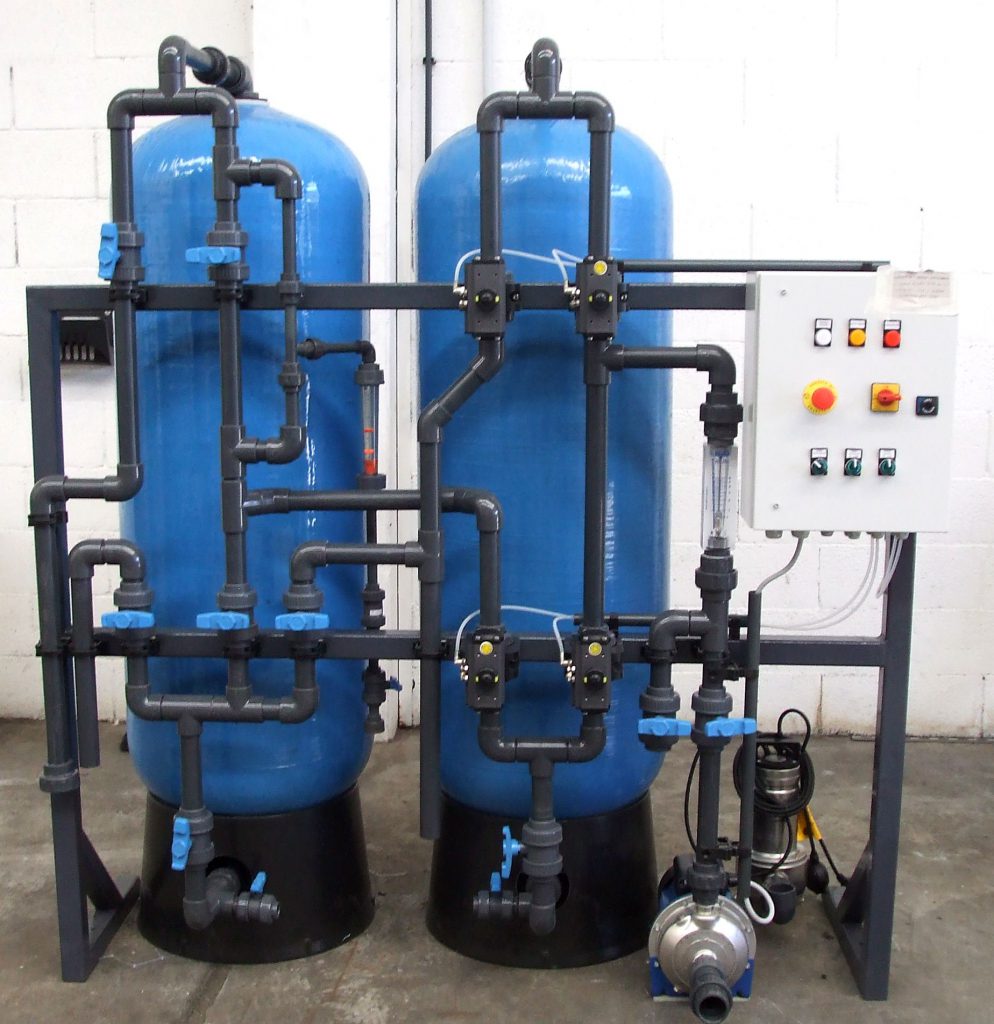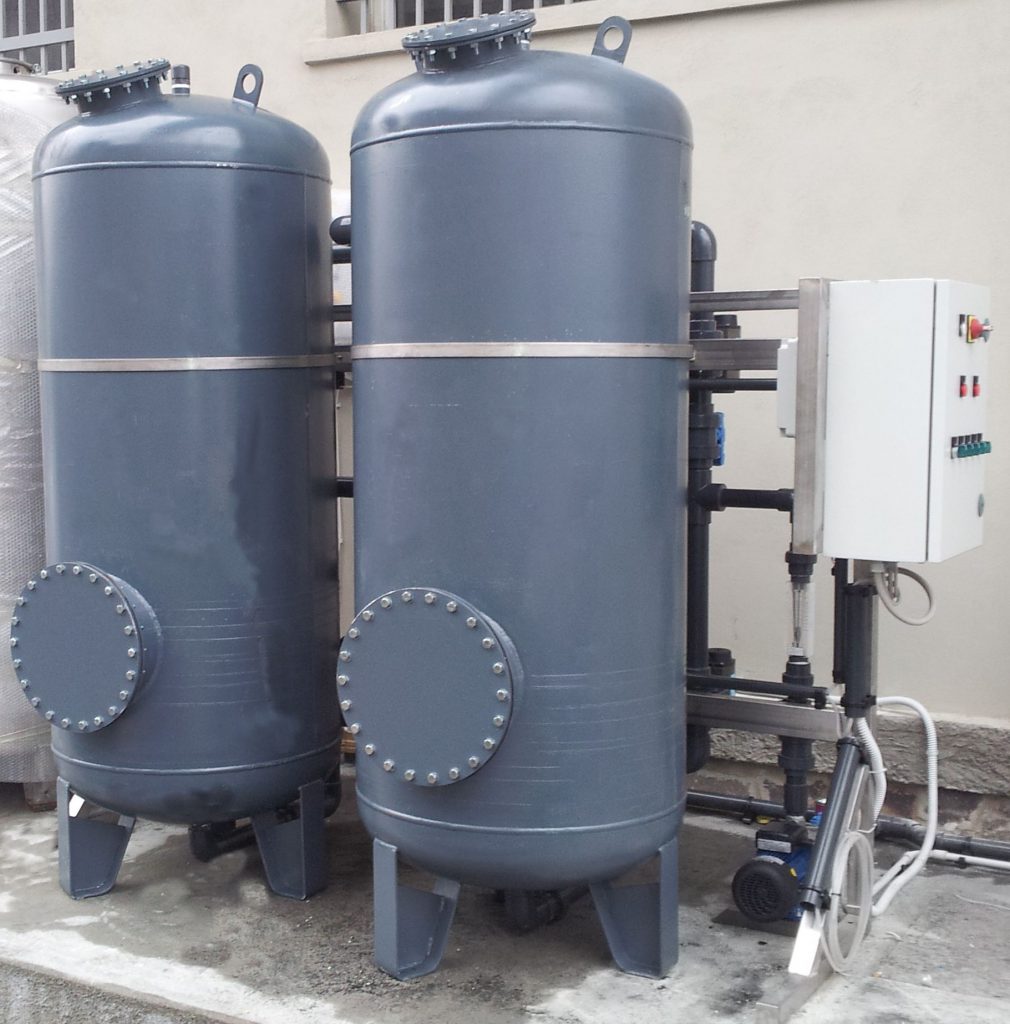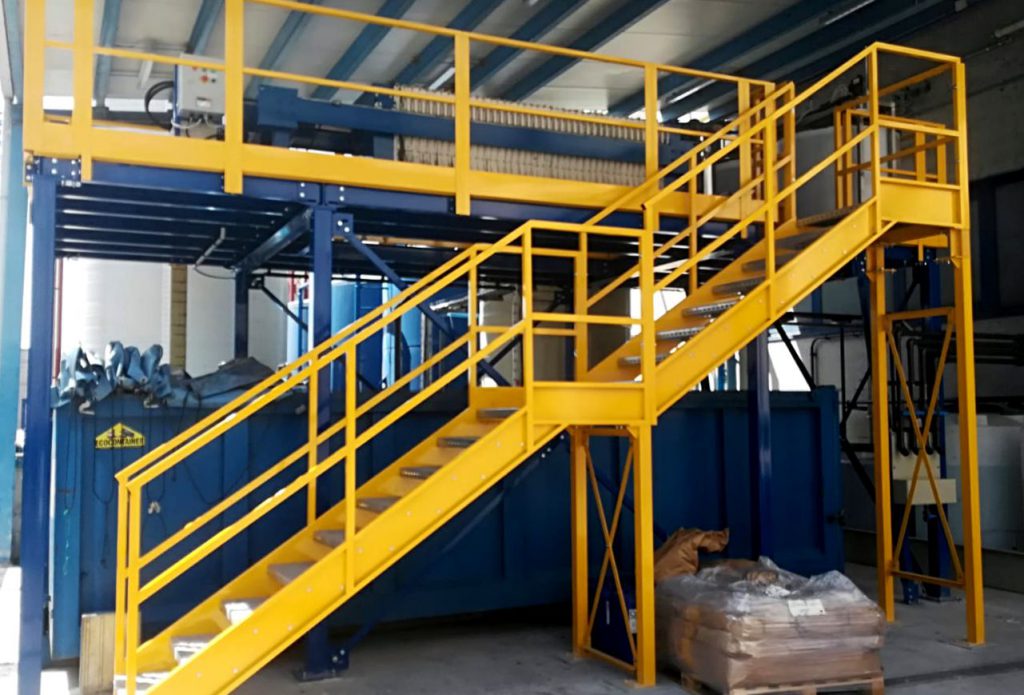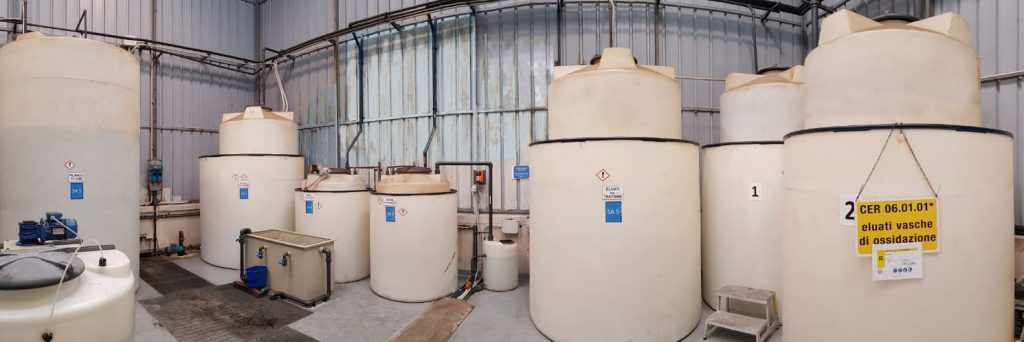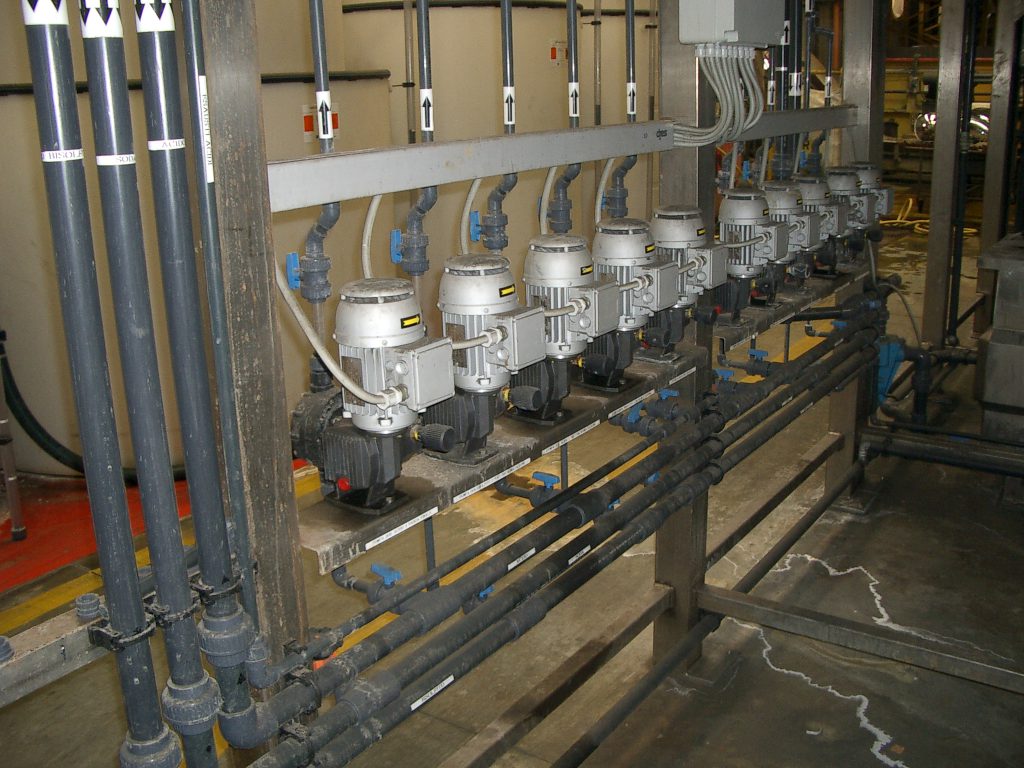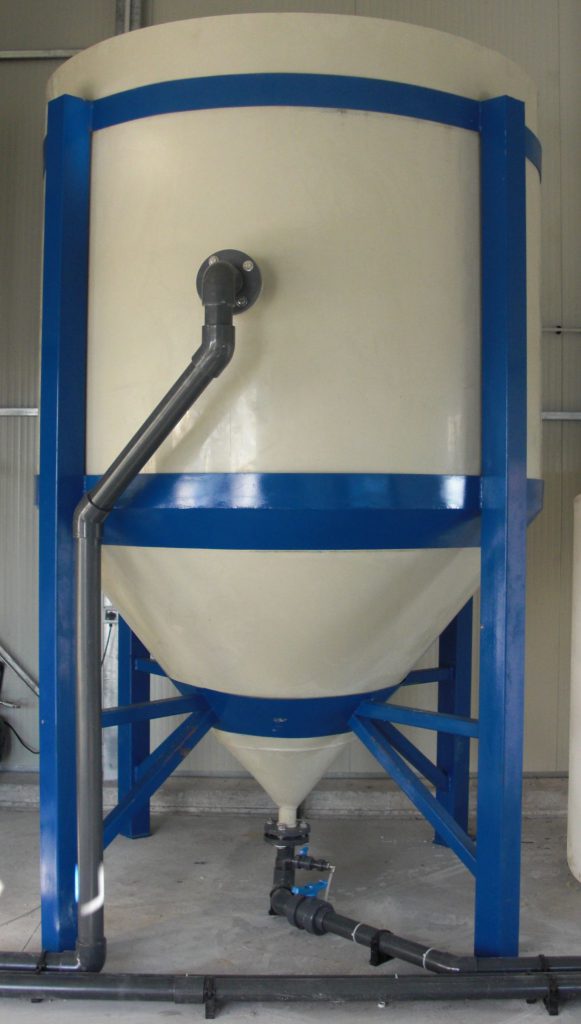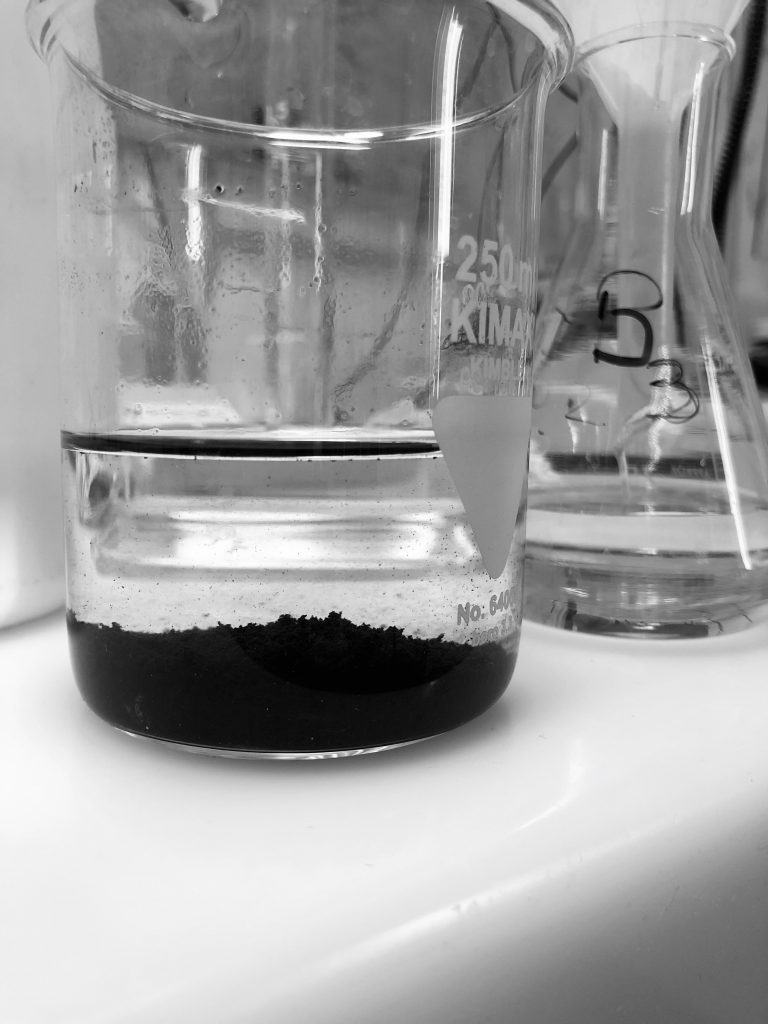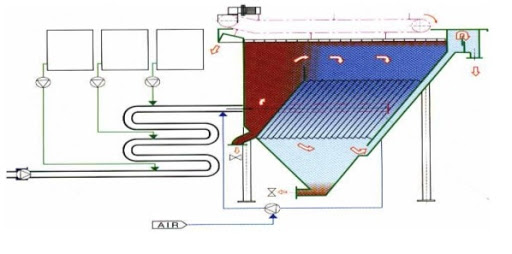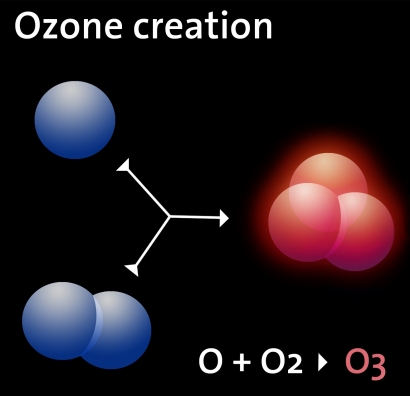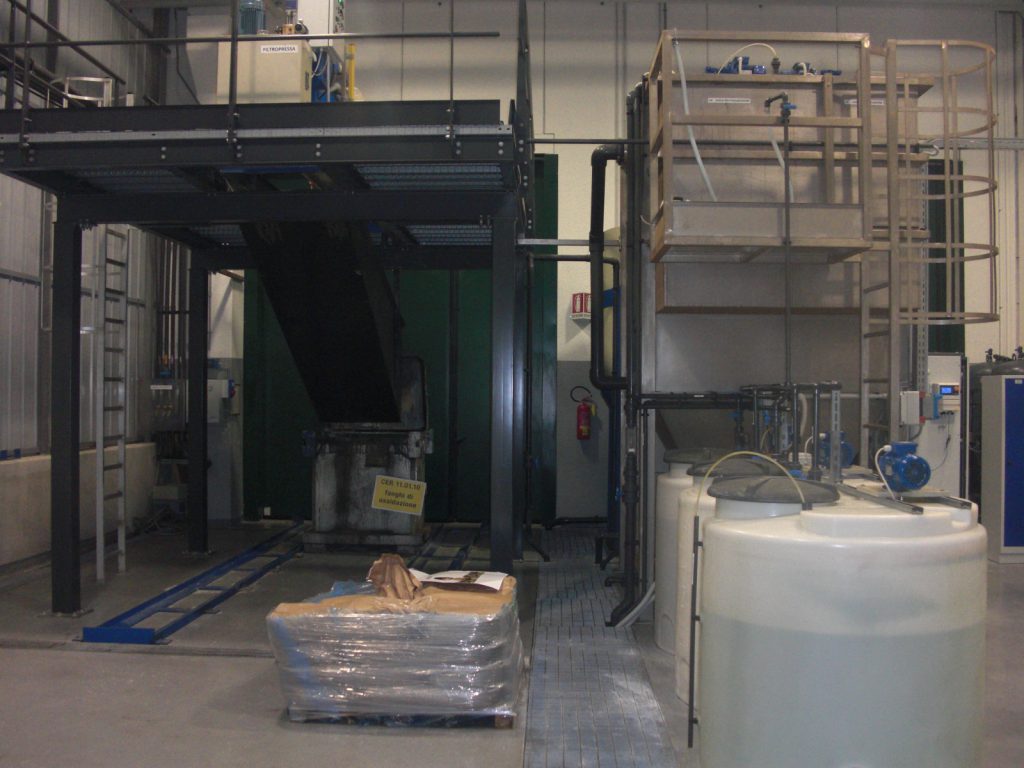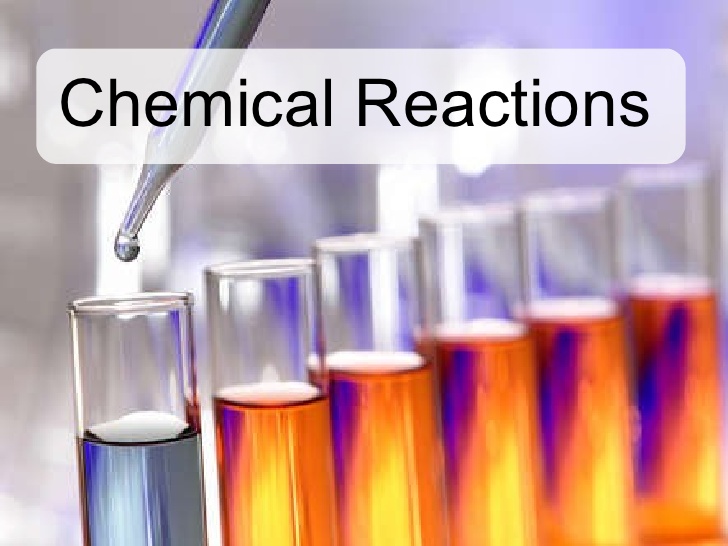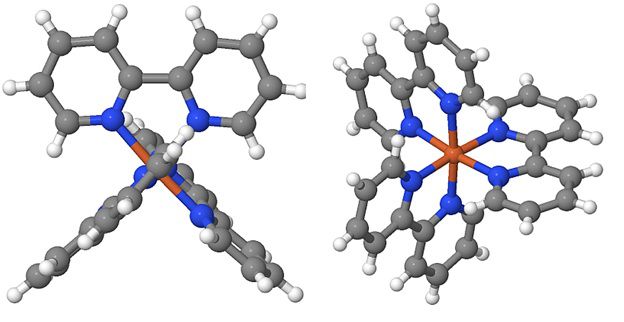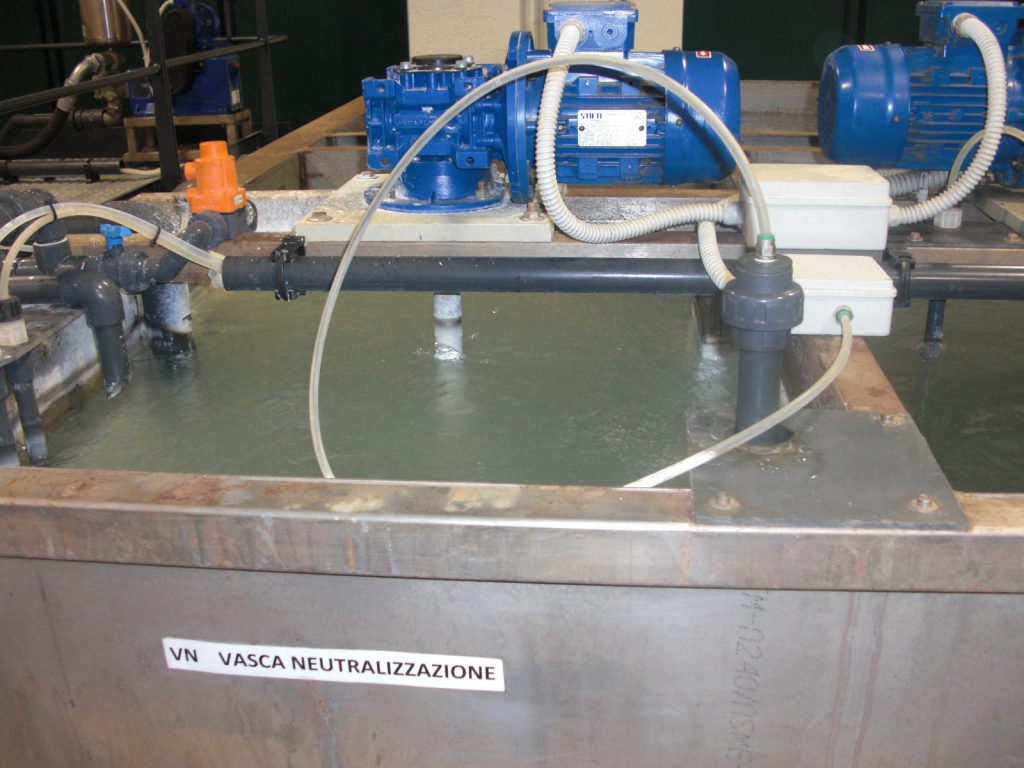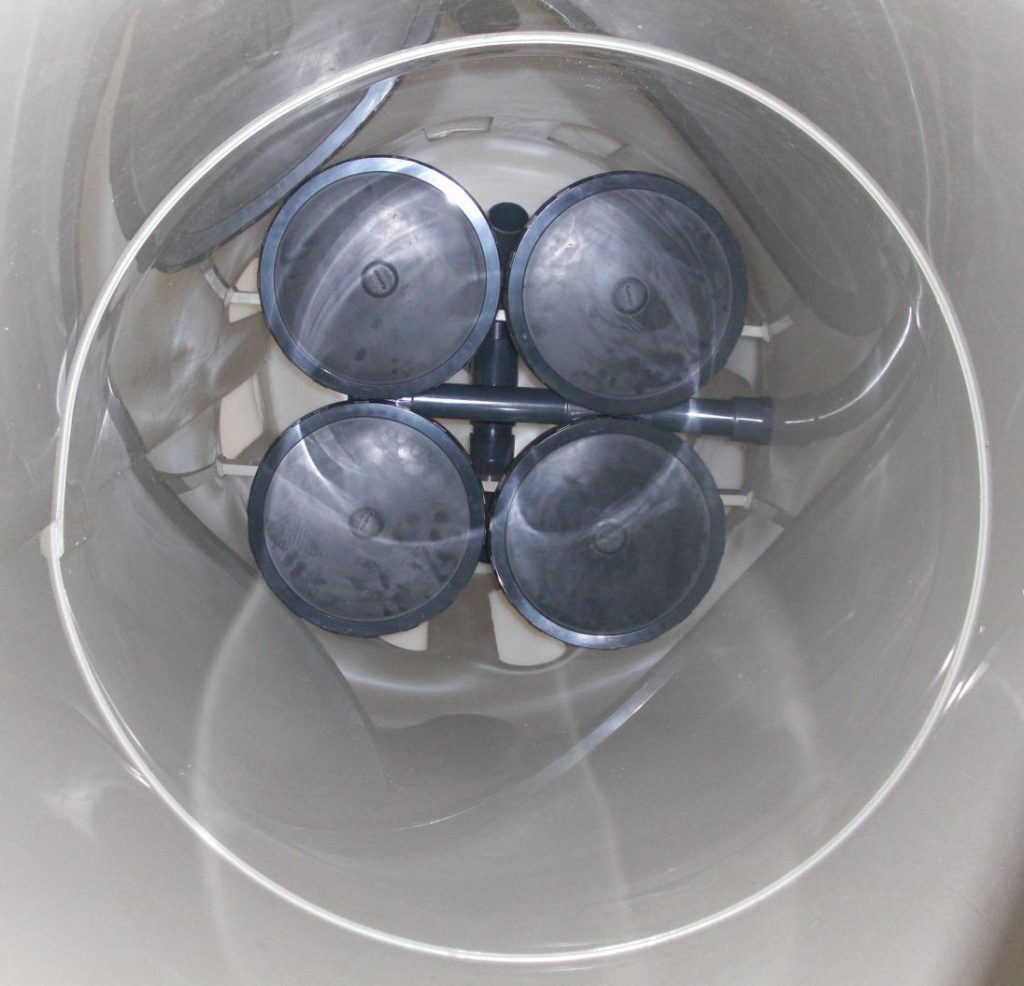The galvanic industry uses chemical baths to electrodeposit cyanide-containing metals.
The presence of cyanide in the electrodeposition process is necessary and is used as a carrier product to allow the correct chemical reaction and make it balanced over time.
The effluents produced have a small percentage of cyanide that must be oxidized.
The oxidation of cyanides and CN and CNO cyanates is normally performed with sodium hypochlorite as it is economical.
The chemical reaction of the de-cyanidation can be managed with special Redox readers, the cyanide oxidation time is about 30 minutes if the pH is higher than 10.50, it is for this reason that the de-cyanidation stage in water treatment plants must be accompanied by the dosing of caustic soda controlled by pH reader.
The oxidation reaction of cyanides is as follows, CN- + ClO- + H2O = ClCN + 2 OH- = CNO- + Cl- + H2O, at the end of the reaction the treated water acquires a color ranging from green to deep blue, brown colors testify an excess of residual free chlorine.
Other systems of de-cyanidation in a water treatment, are performed with hydrogen peroxide, this system does not produce additional salinity but is not very advantageous for the high cost of hydrogen peroxide.
Another alternative to be used in purification plants, is the use of advanced oxidation with the use of ozone that immediately destroys cyanide without secondary chemical residues, this system is the most efficient, the only disadvantage that does not allow the spread of this technology is the initial investment cost.

